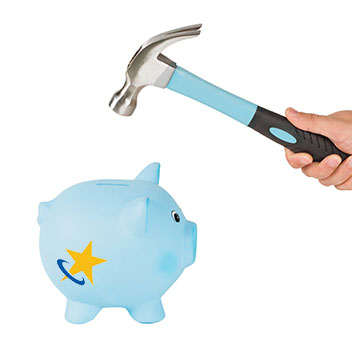Millions of student loan borrowers could benefit from this accelerated relief.
The Trump administration has agreed to a court-supervised plan that will speed up student loan forgiveness for people in income-driven repayment (IDR) and public service loan forgiveness (PSLF) programs.
Once approved by the court, this plan means faster relief, refunds for those who overpaid, and — maybe most importantly — no surprise tax bills for borrowers whose loans are forgiven by the end of 2025.
What’s Changing
Under the new agreement, the U.S. Department of Education will:
- Cancel student debt for all eligible borrowers enrolled in Income Driven Repayment, Income Contingent Repayment, Pay As You Earn, or Public Service Loan Forgiveness programs who have made the required number of payments.
- Reimburse borrowers who kept paying after becoming eligible for cancellation.
- Process pending applications for income-driven repayment adjustments and PSLF “buybacks,” including those from borrowers no longer required to prove financial hardship.
- Protect borrowers from taxes — anyone whose loan is forgiven by December 31, 2025, will not receive a tax form counting that forgiveness as taxable income.
- Report progress to the court every 6 months, showing how many loans have been processed and how many borrowers have received relief.
This plan also prevents what some have called the “2026 tax bomb.”
Starting in 2026, student loan debt cancellation could be treated as taxable income. Without this agreement, borrowers whose loans were forgiven in 2025 might have faced an unexpected tax bill.
How We Got Here
This update follows a lawsuit filed earlier in 2025 by the American Federation of Teachers (AFT) and several individual borrowers. The case began after the Education Department temporarily removed IDR enrollment forms and paused processing earlier this year.
While the department later resumed accepting applications, there was still no public commitment to cancel the loans. That’s what this agreement changes.
Now, the government is legally committing — under court supervision — to deliver the relief borrowers were promised.
What This Means for Borrowers and Parents
For students, graduates, and parents who have been making monthly payments for years, this could finally mean closure. Here’s what it means in plain terms:
- Faster Loan Forgiveness - If you’ve been on an IDR or PSLF plan and made the required payments, your remaining balance could be canceled sooner than expected.
- Refunds for Extra Payments - If you kept paying after you already qualified for forgiveness, those payments may be refunded.
- No Surprise Tax Bills - If your loan is forgiven by the end of 2025, you won’t be taxed on the forgiven amount — a huge relief for many families.
- Accountability and Transparency - With six required court progress reports, the Education Department must now show how quickly it’s processing applications — something borrowers have long asked for.
- Broader Impact - This could especially help public service workers — teachers, nurses, government employees — who’ve carried debt while serving their communities.
What Borrowers Should Do Now
Even though this plan is a major step forward, it’s not automatic. Borrowers should take a few steps to ensure they don’t miss out.
1. Confirm Your Repayment Plan
Log in to StudentAid.gov and check which plan you’re on.
Check if you are on IDR, ICR, PAYE, REPAYE (if eligible), or PSLF. Contact your loan servicer if you are unsure.
2. Review Your Payment History
Look at your payment count. IDR forgiveness generally requires 20 or 25 years of qualifying payments.
If you’ve reached that milestone, your balance may qualify for cancellation.
Keep records — if you overpaid, you might be owed a refund.
3. Submit or Resubmit IDR Applications
If you paused or never completed your IDR application, now is the time to resume it.
Don’t assume your servicer will automatically enroll or update you — log in and confirm your paperwork is current.
4. Watch the Deadlines
The tax-free forgiveness cutoff is December 31, 2025.
If your loan forgiveness is processed by then, you won’t receive an IRS Form 1099-C for taxable income. That means no unexpected tax bill next year.
5. Track Progress
The Department of Education will issue updates every six months. Keep an eye on your loan account and on official federal updates — not just social media posts or third-party summaries.
6. If You’re a Parent Borrower
If you took out Parent PLUS loans and later consolidated or switched to an income-driven plan, this could apply to you, too.
Check your plan and payment history with your servicer.
7. Stay Informed
Because the plan still needs final court approval, stay tuned to reputable sources like Federal Student Aid, AFT.org, or Edvisors.com for the latest updates.
Borrower Readiness Checklist
| Step | Action | Why It Matters |
|---|---|---|
| 1 | Log in to StudentAid.gov and confirm your repayment plan | Only specific IDR/PSLF plans qualify for this round of forgiveness |
| 2 | Check your qualifying payment count | You may already be eligible — and refunds could be available |
| 3 | Update your IDR application if needed | Ensures your account is processed correctly under the agreement |
| 4 | Keep records and screenshots | Proof can help resolve issues later |
| 5 | Watch for updates and emails | The Department of Education must post progress reports every six months |
| 6 | Verify forgiveness happens by 12/31/25 | Ensures your forgiven balance won’t be taxed |
| 7 | Stay in touch with your servicer | They’ll notify you if you qualify for discharge or refund |
Bottom Line
If you’ve been waiting on loan forgiveness under an income-driven or public-service plan, help is finally on the way — and this time, it’s backed by the courts.
Stay informed, stay organized, and take the time to confirm your eligibility. Relief may be closer than you think.







